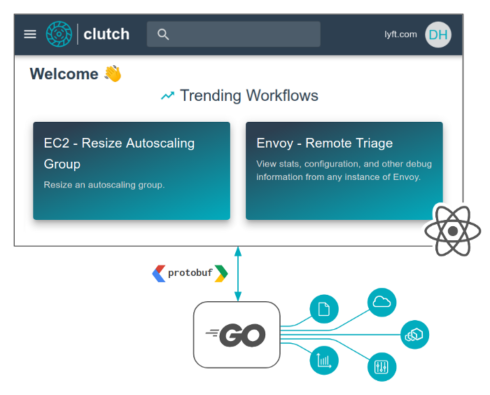
Lyft has announced it is open sourcing its UI and API platform for infrastructure tooling: Clutch. The platform allows teams to build, run, and maintain workflows that have integrated domain-specific safety mechanisms and access controls.
According to Lyft, cloud computing has reduced the adoption cost of new infrastructure because of how dynamic it is. However, each new technology comes with a new set of configuration, tooling, logs, and metrics. “While new infrastructure is increasingly easy to adopt, it is difficult to scale the management of new components, especially as the complexity of the overall platform and the size of the engineering team grows,” Daniel Hochman, platform engineer at Lyft, and Derek Schaller, staff software engineer at Lyft, wrote in a post.
Lyft explained that Clutch solves this challenge by allowing infrastructure teams to deliver safe interfaces for infrastructure management.
According to the company, Clutch ships with features that allow users to manage platforms like AWS, Envoy, and Kubernetes.
The platform is comprised of two main components: a Go backend and React frontend. The Go backend is an extensible control plane that brings together a number of systems behind a single API with common authorization, observability, and audit logging. The React frontend is a workflow-oriented UI that allows users to create new features with less code, less required JavaScript knowledge, and less maintenance.
The main goals behind the platform are to reduce the Mean Time to Repair (MTTR), eliminate accidental outages, enforce granular permissions and audit activity using a common format, and provide a platform that eases the development of future tools.
Lyft has released its roadmap for the future of the tool. Long-term, it hopes to create a context-aware developer portal that will surface relevant tools and information when a user lands in the portal. Upcoming features it plans to add include an Envoy UI, chaos testing, auto remediation, safety enhancements, additional infrastructure life cycle management capabilities, service health dashboard, generalized configuration management, and topology mapping.
“We think Clutch has the same outstanding potential for other engineering teams both large and small. We look forward to working with the community on additional plugins and core features in order to build a rich ecosystem. Our goal is to give every team and every tech stack access to first-class cloud-native tooling and reduced cognitive load,” Hochman and Schaller wrote.





